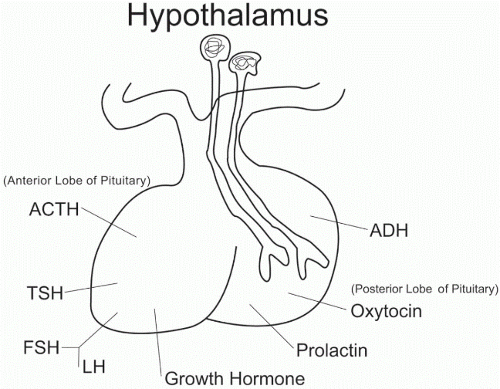Hypothalamus and Fluid Regulation
QUICK LOOK AT THE CHAPTER AHEAD
The hypothalamus is the most important organ responsible for maintaining homeostasis. In this chapter we briefly explain the functions of the thirst center and the antidiuretic hormone.
The hypothalamus is the most important organ responsible for maintaining homeostasis (Figure 37-1). Its control over the respiratory and cardiovascular systems and stress, metabolic, and fluid and electrolyte balance is essential for supporting life. The hypothalamus is connected to and controls the pituitary gland, which has two lobes, the anterior lobe (adenohypophysis) and the posterior lobe (neurohypophysis). The anterior lobe is known as the master gland and conducts multiple functions through specialized cells that secrete specific hormones for particular metabolic roles. The posterior lobe, however, communicates with the hypothalamus in the regulation of fluid balance with antidiuretic hormone (ADH), or vasopressin. The hypothalamus synthesizes ADH, which is transported and stored in the neurohypophysis until its needed release for fluid regulation. A system of feedback loops is used to regulate the posterior pituitary gland to release ADH, which affects the target organ, producing the desired physiological response.
Stay updated, free articles. Join our Telegram channel

Full access? Get Clinical Tree



